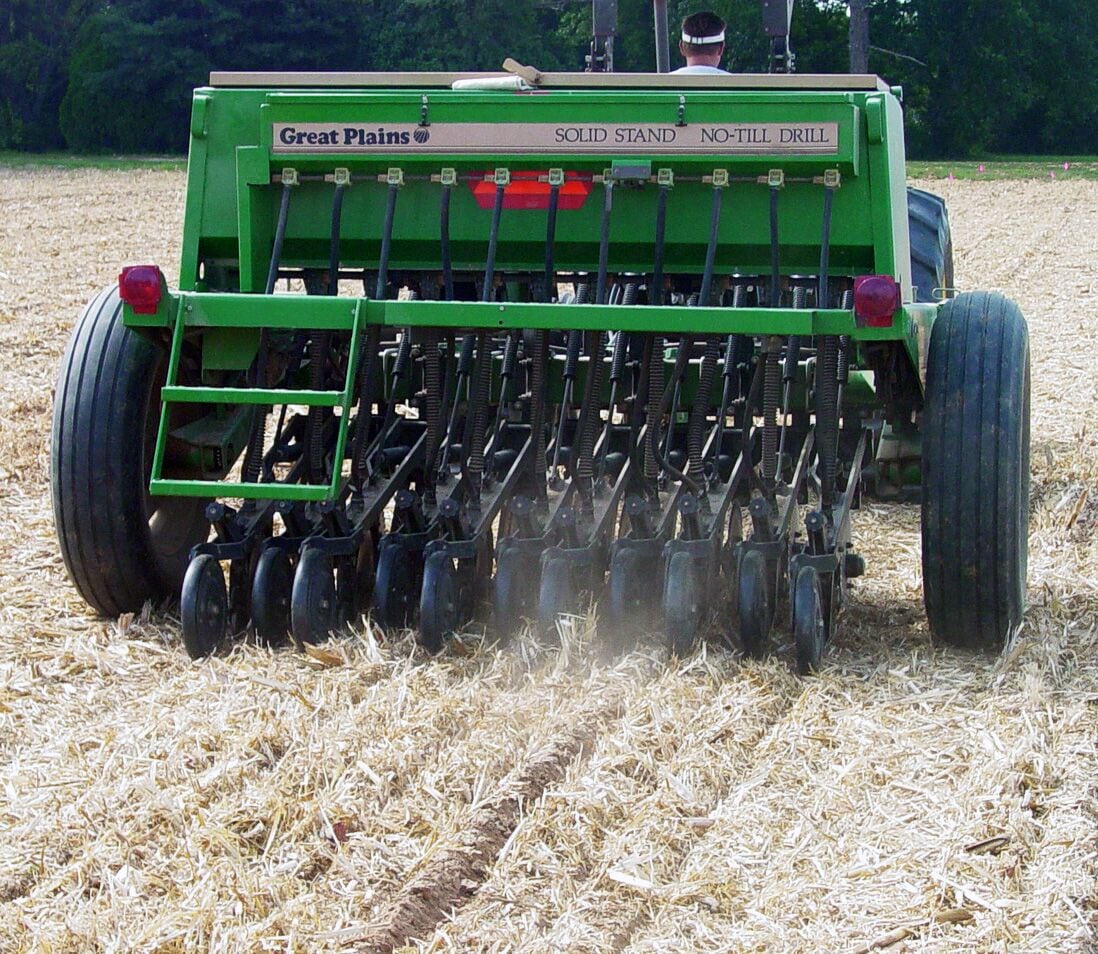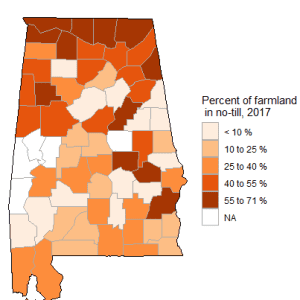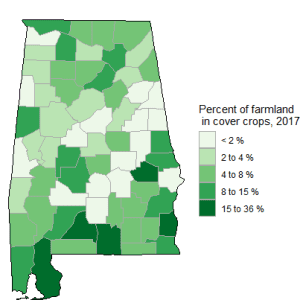Conservation Tillage

The re-emergence of carbon credits has drawn a lot of attention as the new year begins. Carbon markets are programs in which companies pay farmers to sequester carbon by adopting conservation practices, such as cover crops and no-till. While carbon markets provide an extra incentive to farmers for using these practices, Alabama farmers have already been using these practices due to their on-farm benefits. These benefits include improvements to soil health and potential cost savings when using no-till.
Cover Crops
Alabama producers planted cover crops on 8.1 percent of cropland according to numbers from the 2017 Census of Agriculture. The U.S. in total had cover crops on just 3.9 percent of its cropland in the same year. Alabama ranked fourteenth in the U.S. in terms of percent of land in cover crops. The leading state was Maryland, where producers planted cover crops on 28.8 percent of cropland.
In Alabama, Baldwin county has the highest rate of adoption in the state with 35.6 percent of its crop acres having cover crops. Rounding out the top five are Covington (23.2 percent), Macon (21.8 percent), Conecuh (18.2 percent), and Henry (18.1 percent) Counties. At the other end of the spectrum are Colbert, Cleburne, Lamar, Tallapoosa, and Russell Counties, which all have cover crops on less than 0.9 percent of cropland.
- Percentage of Alabama cropland that used no-till in 2017.
- Percentage of Alabama cropland that used cover crops in 2017.
No Till
Alabama ranks eighteenth in the U.S., employing no-till management practices on 27.2 percent of the state’s cropland. Alabama is just above the national no-till adoption rate of 26.4 percent. Maryland also leads the way in no-till use with a rate of 58 percent.
In Alabama, Cherokee County leads the pack with 70.5 percent of no-till cropland. Lauderdale (58.9 percent), Lawrence (56.9 percent), Colbert (55.4 percent), and Madison (54.8 percent) Counties follow. The counties with the lowest use of no-till planting practices are Wilcox (0.9 percent), Clarke (1.2 percent), Lee (2.5 percent), Montgomery (3.3 percent), and St. Clair (3.5 percent) Counties. The counties with the highest rates generally border Tennessee, the fifth leading state in no-till adoption.
Summary
While interest in cover crops and no-till may have increased due to the increased prevalence of carbon markets, these two conservation practices were already in use in Alabama at higher rates than the rest of the nation. More information on conservation practices, carbon markets, and other sources of payment for using conservation practices is available on the Healthy Soils webpage, located on the Alabama Cooperative Extension System website.



